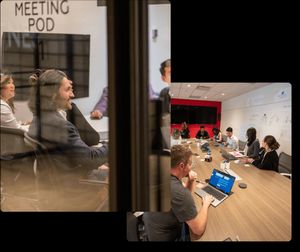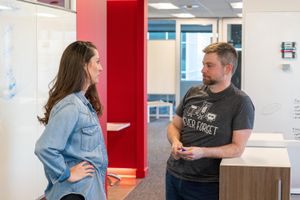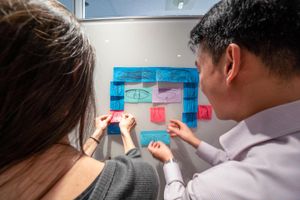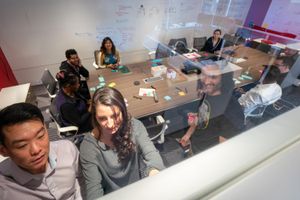
As trusted advisors, we provide professional consulting and coaching services for impact-conscious leaders and teams who want to use their power to positively disrupt outdated thinking, systems, and ways of working.
All roads lead to power
Workplace power dynamics are shifting
The frequency and intensity of change is introducing new power dynamics and relational challenges that most leaders and teams do not (yet) have the skills, tools, and strategies to navigate.
Employees are finding their voices
People are demanding real action and accountability from leaders and organizations to operationalize inclusion and equity, connection and autonomy, and values-based ways of working.
Ways of working are changing
Personalized working environments, autonomous team structures, and genuine activism are examples of growing expectations for people to have more control over their work-lives.
Places we can start

Team Development
Personalized and action-oriented learning & development experiences for 'leaderful' teams

Cultural Alignment
Human-centred and systems-conscious people & culture consulting for leaders.

Our work with impact-conscious leaders and their teams follows an approach based on feedback, experimentation, and agility - or as we call it, the 'Five Ds' approach.
Be conscious of inferences, biases, and assumptions and choose to engage people in meaningful conversations to surface needs, values, and hopes and fears.
"What do we know about this from our team's perspectives?"
Discovery is about asking powerful questions, listening deeply, and acknowledging the people you’re sharing a big part of your life with.
Make sure that people are aligned on the understanding and meaning of problems, opportunities, words or terms, and any other signals that have surfaced.
"What is our shared understanding and agreement of existing challenges and opportunities?"
Definition is about establishing shared understanding, agreement, AND commitment, when it comes to the challenges and opportunities you will be prioritising and allocating effort to. In other words, it’s providing clear and purposeful direction.
Acknowledge the feedback, perspectives, and ideas that people have contributed, and clearly communicate the connection to what you will (and will not) be prioritizing as a team.
"What are we choosing to prioritize, and how might we approach this work?"
Design is about engagement, alignment, and feedback-informed experimentation and iteration – knowing you will learn and adapt as you identify more meaningful ways of working together.
Create the roadmap, get the right people in the right roles, and establish your ways of working. Do not forget to confirm agreement (different from understanding) and to set up accountabilty rhythms.
"How are we ensuring alignment, agreement, and traction"?
Delivery is about is about supporting team members through challenges and opportunities as they present themselves. It’s about the activation of awareness, skill, and commitment you’ve made together as a team.
Continue to have meaningful conversations - asking powerful questions, surfacing helpful feedback, and making important decisions - to ensure the alignment of intention and impact.
"What is here for us now, and what is next"?
Debrief is about traction – moving forward through feedback, building capacity, and celebrating the learning (wins, misses and everything between). Debriefing is an amazing place for recognition and appreciation to shine!
